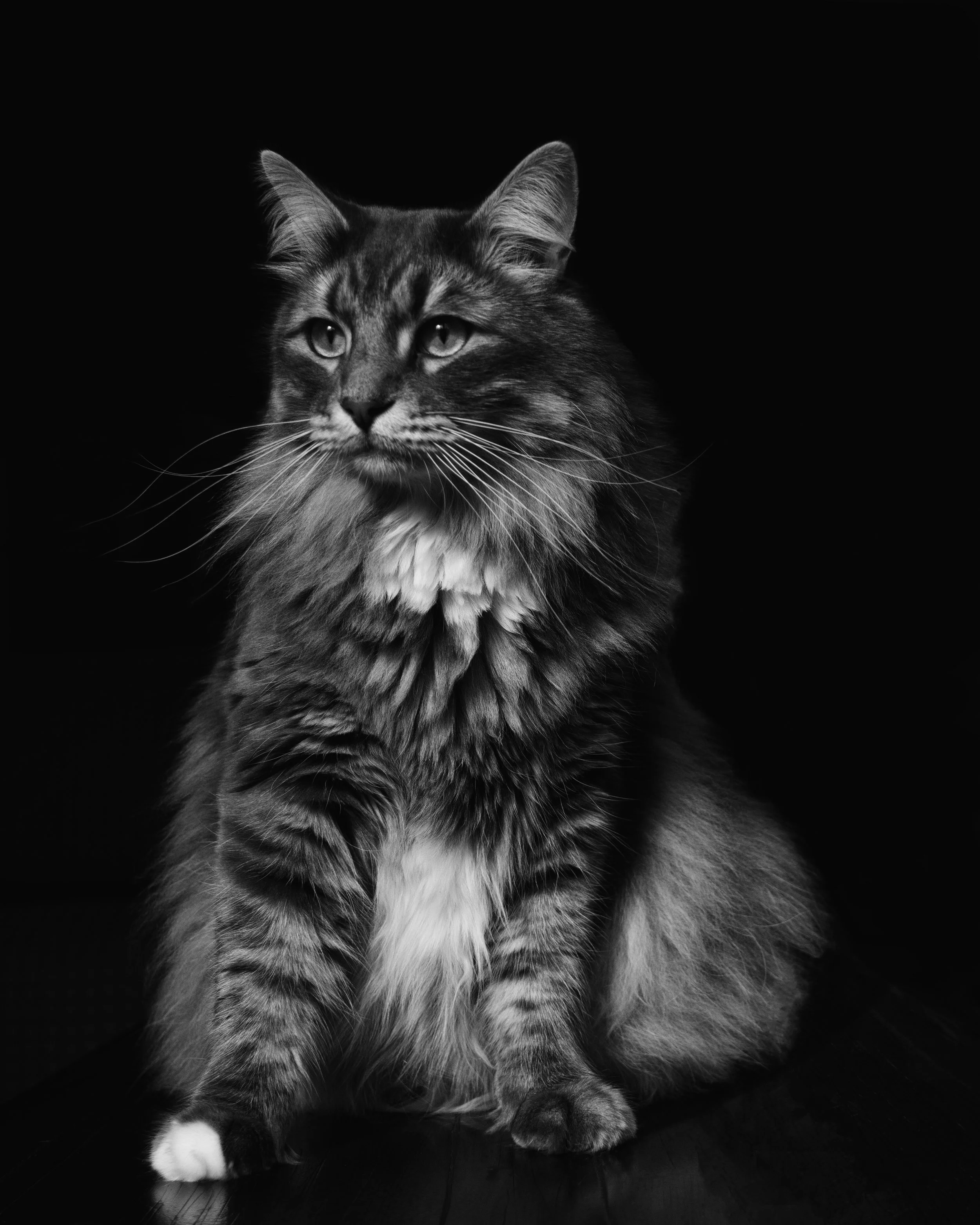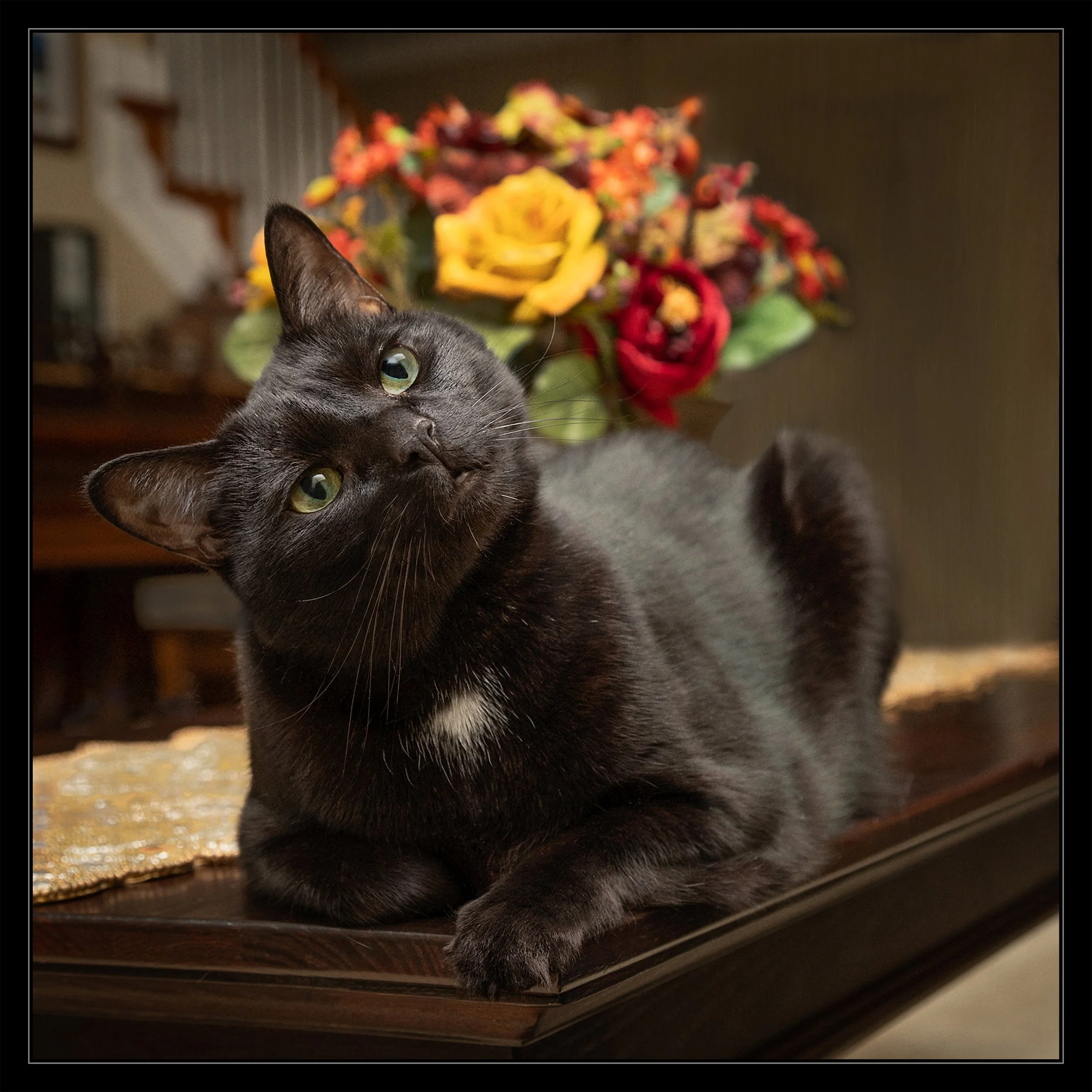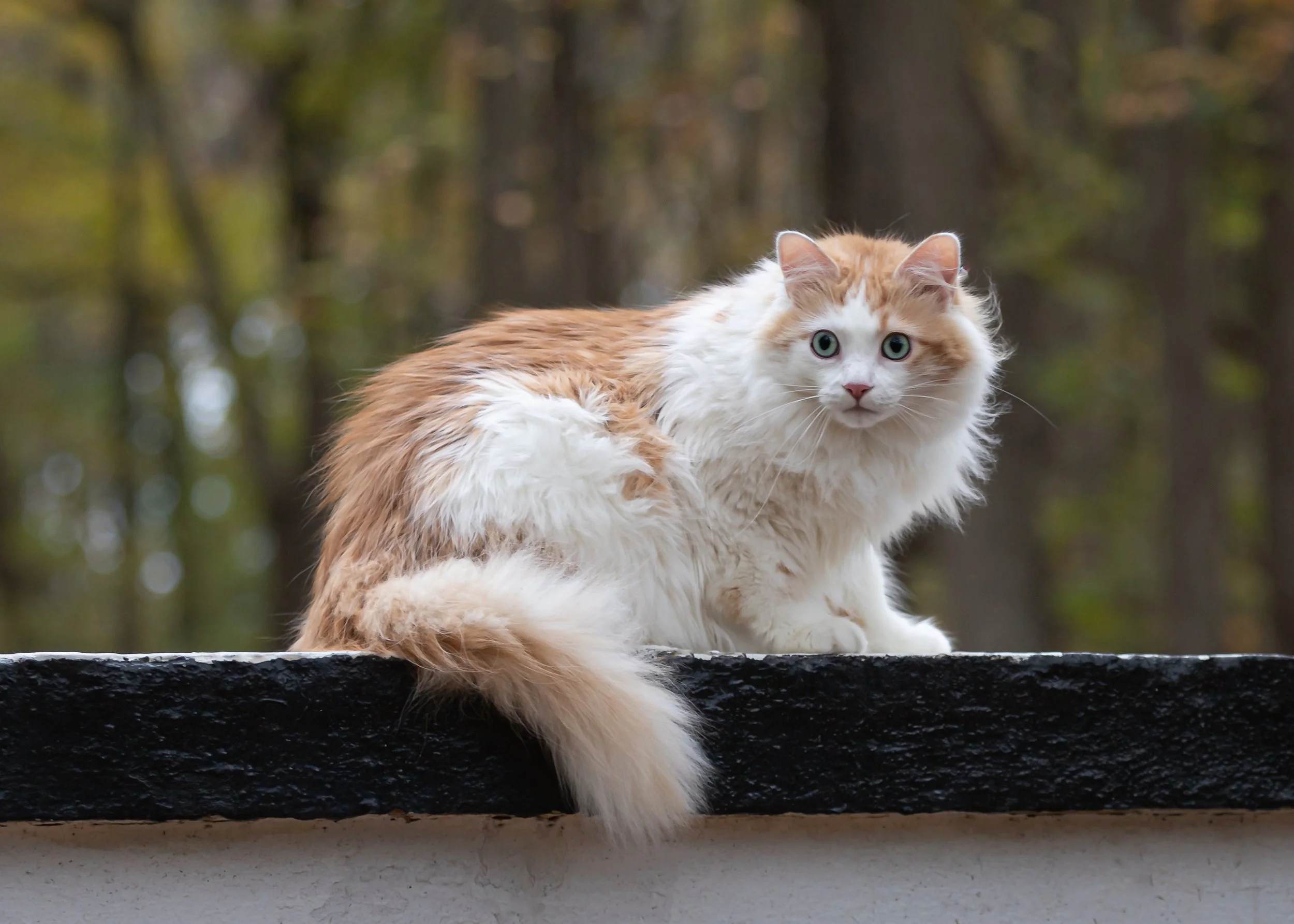Photographing Cats
Similar to other professions, photographers have Facebook groups to talk to other photographers about improving their work or trying new editing styles, etc. I am in groups for different niches, including portrait, landscape, and, of course, pet photography. Interestingly, all of my pet photography groups have names with the word dog in them. Why is it that pet photographers tend to focus on dogs? Plain and simple, photographing cats is hard.
I used just window light to take this image of a Siberian forest cat.
What makes photographing cats hard? If you are reading this there is a good chance you own a cat and you already know the answer to that question. Dogs will often follow commands; cats do what they want. Dogs are often motivated by treats; many cats are finicky. Many dogs enjoy meeting someone new; many cats hate it. All of these combine for difficulties when making a professional cat portrait.
What then can we do to get good images? For me, I try not to force the cat to do what I want and instead I let the cat be a cat. What this means is I have to adapt to the cat’s environment and I have to be willing to move constantly. I let the cat settle down where he or she is comfortable and I photograph them there.
I used a treat to get this cat curous about what I had.
What I usually suggest is photographs in a room the cat enjoys spending time in. For a good portrait, that may mean the room needs to be neatened up and de-cluttered before the photo session to have fewer distractions in the background of the shot. I use natural lighting from windows or bounced flash to light the cat. Bounced light means not aiming the flash at the cat(which can scare it an/or cause color shifts), but at a ceiling or wall that will reflect the light back on the cat.
To encourage engagement and interesting expressions when photographing cats, I use cat toys, as well as treats. Often times the cat will avoid me when I first begin but gets used to me or begins to see me as a source of yummy treats and becomes more friendly and easier to photograph as time goes on. I plan for these sessions to take a bit longer because of the warming up process.
This kitten did not want to stay still, but I used a quick shutter speed and good light to get this adorable image
If a cat can go outside safely, it can be fun to photograph them interacting with the larger environment. Safety is always my primary concern, so using a leash is certainly a possibility, and the leash can be removed in post processing. In the outdoor portrait here,the cat was on a leash.
This cat was on a leash at a state park.
Studio photography is also a possibility if the cat is not easily intimidated by unfamiliar environments and smells. Some do quite well in a studio and a classical portrait can made. I will be opening a studio once the government says it is ok to open non-essential businesses and when I personally feel it is safe for everyone and that I can keep the studio disinfected, meaning supplies of cleaning materials are abundant enough that I can guarantee I will always have enough.
This cat was on a table with a plain wall. i added the backdrop for more interest.
If you are interested in having your cat photographed, please give me a call to schedule or ask any questions you might have. Most of these cats were photographed in their homes in the Columbia, Maryland area, but I can travel further as needed. the outdoor cat was photographed at North Point State Park, for instance. I also photograph in Dallas, Texas.
Do you want to get some better pictures of your cat? Check out this link for more tips: https://iso.500px.com/cat-photography-tips/




